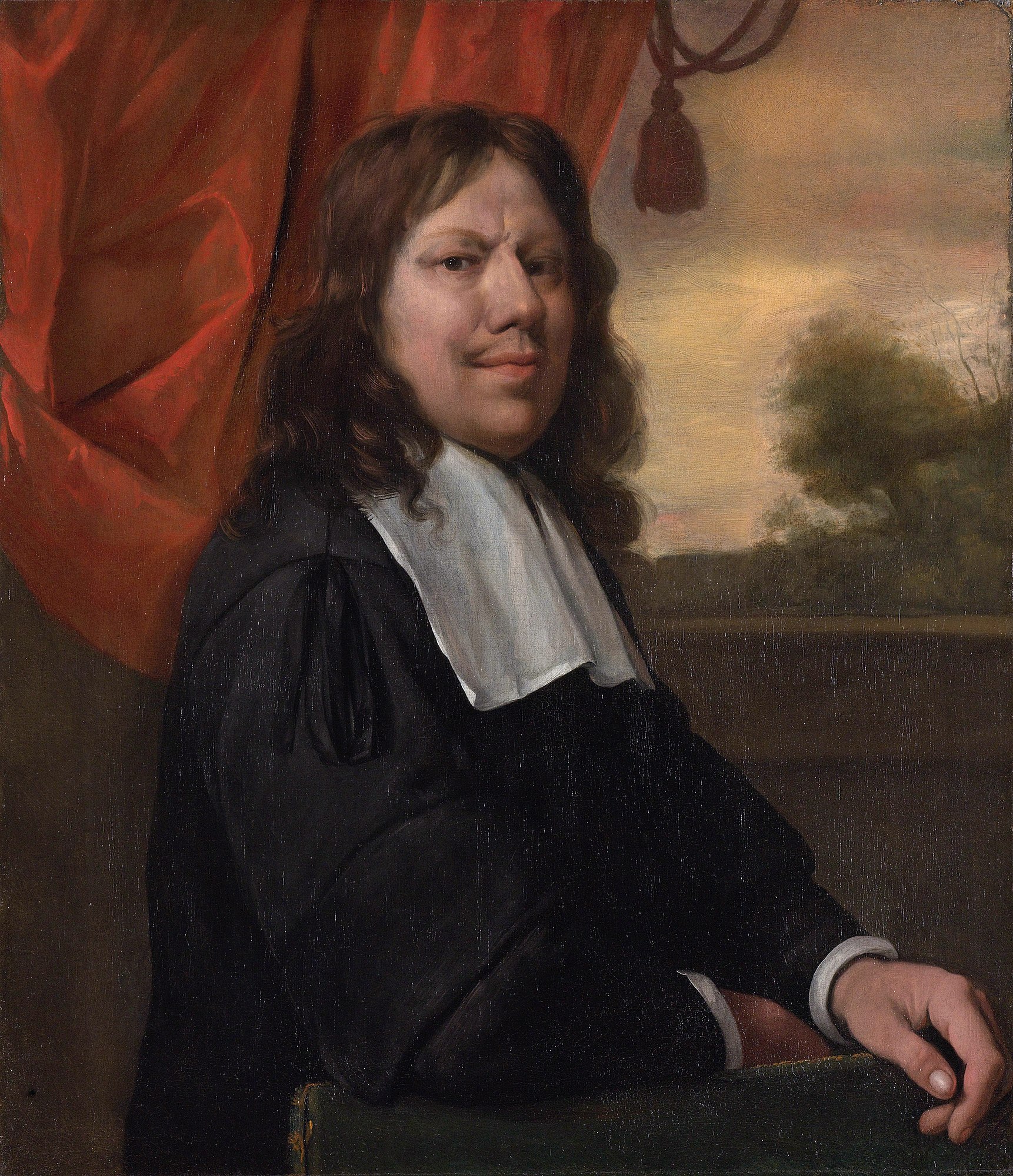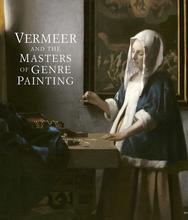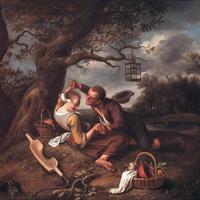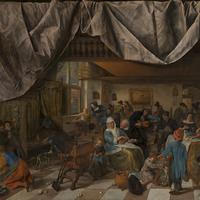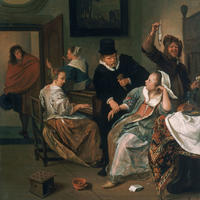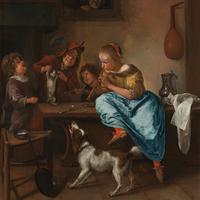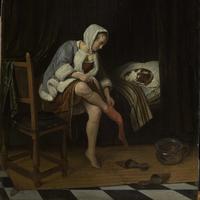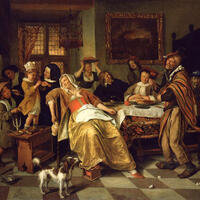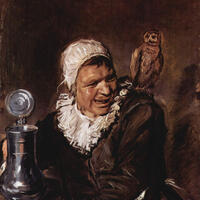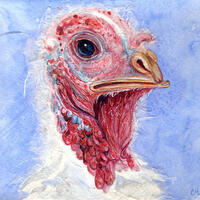More about Jan Steen
- All
- Info
- Shop
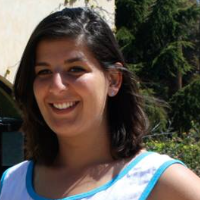
Contributor
Jan Steen was born in Leiden to a good Catholic family and was the oldest of at least eight children.
Steen’s parents were brewers and owned a tavern, so whenever people wanted to party they’d turn to the Steens. Seriously, a “Jan Steen household” means a messy one because that was what Steen often painted--and we can only assume he painted what he knew.
Steen went to the same school as Rembrandt, and there must be something in the water there because he picked up the art bug, too. In 1684, Steen and Gabriël Metsu founded the Painters' Guild of Saint Luke at Leiden. Shortly after, he moved in with artist Jan van Goyen and, with the speed of a cheetah, swept up the man’s daughter and married her. Then, just like his parents, he had eight kids and ran a brewery. When the art market was decent, he continued to paint. But a bunch of tragedies befell Steen in a short number of years. His wife died in 1669, his father died in 1670, and the art market collapsed in 1672--the Year of Disaster. Following the collapse, Steen opened a tavern, remarried and became president of the Saint Lucas Guild. Life goes in circles.
As noted, Steen is known for the “Jan Steen household.” However, despite growing up in the perfect environment for a wild and crazy guy, it’s pretty much accepted that these paintings are supposed to be a warning rather than an invitation.
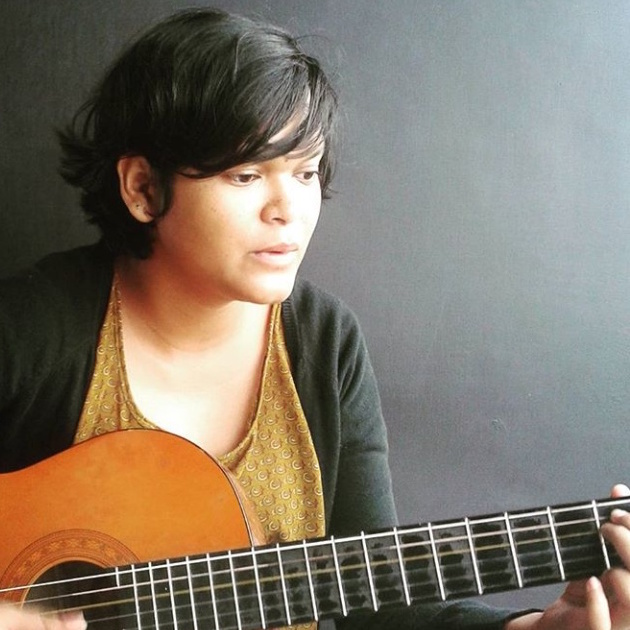
Contributor
I’m not sure if we could call Jan Steen a high functioning alcoholic.
Jan Steen made quite a few paintings in his day; 800 or so. That’s a prolific number, but back in the 17th century Dutch Republic, Steen was also known for his alcohol habit. He ran a pub in Delft for a few years. Some say that he was “his own best customer.” That wouldn’t sound too bad if he had other customers. Unfortunately, for everybody, he had to shut it down, and skip town. Steen did a lot of that, flitting from one city to another. You’ll see what I’m talking about.
Steen was born to a family of wealthy brewers in Leiden. They owned a number of inns and pubs sprinkled across the Dutch country. The ill-fated da Slang (a pub which literally translates to the Snake) that Steen took care of in 1654 wasn’t one of them. Jan Steen probably rented out the pub hoping that his genes would help him keep up a steady business. It didn’t.
In 1948, Steen and Gabriel Metsu founded the Guild of St. Luke in Leiden. He stayed in Leiden for about a year, and then decided to move to the Hague. Here, he met Jan Van Goyen, a famous landscape artist. Steen became his student, and worked with him for a few years. Their relationship sounds a lot like a bollywood film. A young kid moves to the city of dreams for a chance to live his own. He meets a nice guy who takes him under his wing. They’re good friends, but damn, his daughter’s hot. So, Steen does what any young noble man would do. He waits till he can get her father’s permission to sex her up. Well, that is what would have happened in the Bollywood version. Jan Steen did the more obvious thing. He got Grietje pregnant, and made van Goyen his father-in-law.
Jan Steen was a fun Dutchman. He painted scenes of revelry, debauchery, and chaos. He became a household name, literally. Back then, messy homes that seemed to have been partying for weeks would qualify as “een huishouden van Jan Steen” or a “Jan Steen Household.”
The Dutch painter often included himself in his own work. He would appear as a jester, or a lute player, just out there in disguise. He made good use of his family too, making them model for his paintings. His wife and kids feature in quite a few of them. Even their dog made the cut, yipping at their feet, trying to locate the source of chaos. You know what small dogs are like. They have this pathological need for attention. Wait, that’s all dogs. All in all, Steen’s paintings were usually a family affair.
Steen returned to Leiden in 1658, after he wrapped up the pub in Delft. He registered himself at the guild. Again. Skipped town. Again. I’m sure you see a pattern emerging. Lucky for you, Steen doesn’t keep it up. He returns to Leiden in 1670. He registers himself at the guild. Again. But, this time he stays. He becomes the headman of the Guild, thrice. And, in 1672, he even gets a license to run an inn called de Vreede or “The Peace.” With all the debts hanging over his head, we’re pretty sure he needed it.
Jan Steen primarily painted for profit and he painted a lot. Sadly the paintings did not make him very rich. His passion lay elsewhere, probably at the bottom of a bottle.
Sources
- "The Schoolmaster - Jan Steen." WestCoast Media. November 19, 2015. Accessed July 23, 2019. http://wcmagazines.com/art-appetite-attractions/the-schoolmaster-jan-st….
- Chapman, H. Perry. “Jan Steen, A Player In His Own Paintings”. Jan Steen Painter and Storyteller. (Washington: National Gallery of Art, 1996).
- Jonathan5485. "The Life of Man by Jan Steen." My Daily Art Display. August 26, 2011. Accessed July 23, 2019. https://mydailyartdisplay.wordpress.com/2011/08/26/the-life-of-man-by-j….
- "Jan Steen." The Leiden Collection. Accessed July 23, 2019. https://www.theleidencollection.com/artists/jan-steen/.
- "A Discussion of The Merry Family by Jan Steen." TripImprover. Accessed June 28, 2019. https://www.tripimprover.com/blog/the-merry-family-by-jan-steen.
- "Jan Vermeer (1632-1675)." Jan Vermeer: Dutch Genre-Painter, Portrait Artist, Delft School. Accessed July 23, 2019. http://www.visual-arts-cork.com/old-masters/jan-vermeer.htm.
Featured Content
Here is what Wikipedia says about Jan Steen
Jan Havickszoon Steen (c. 1626 – buried 3 February 1679) was a Dutch Golden Age painter, one of the leading genre painters of the 17th century. His works are known for their psychological insight, sense of humour and abundance of colour. Their satire also mocks the behavior and attitudes of the Dutch bourgeoisie.
Check out the full Wikipedia article about Jan Steen

